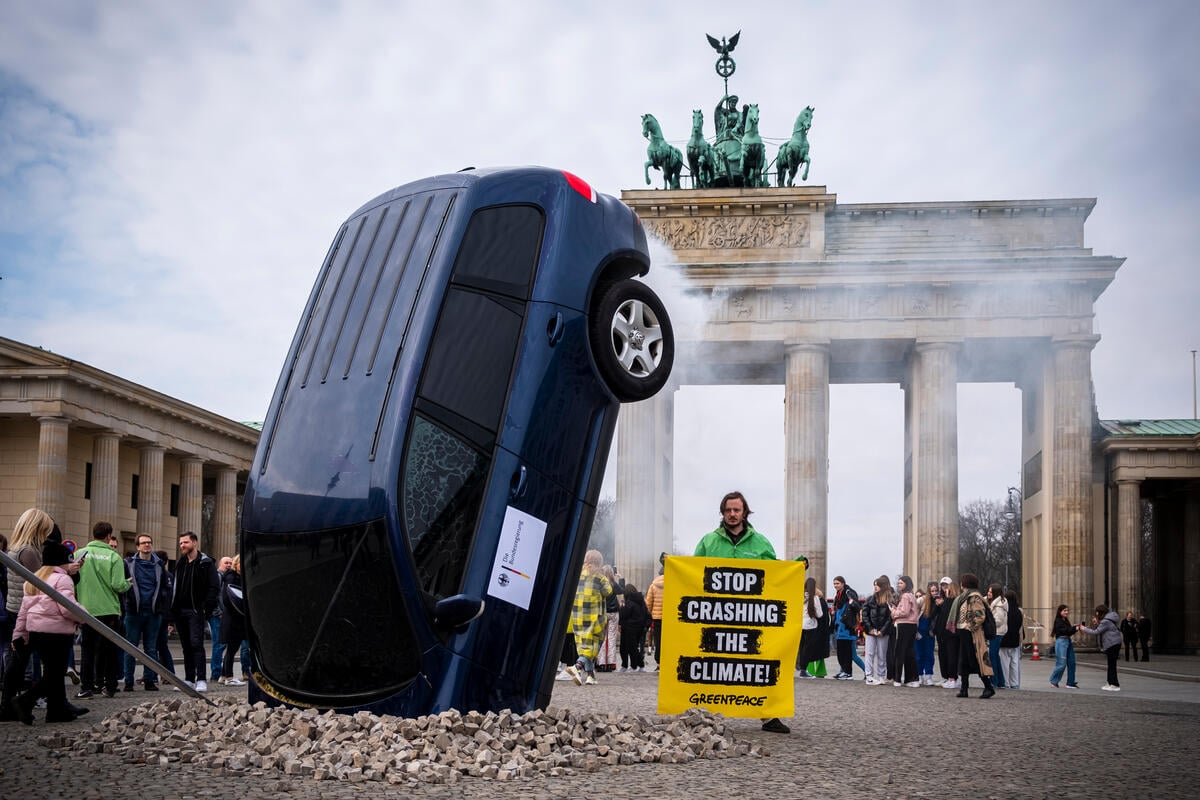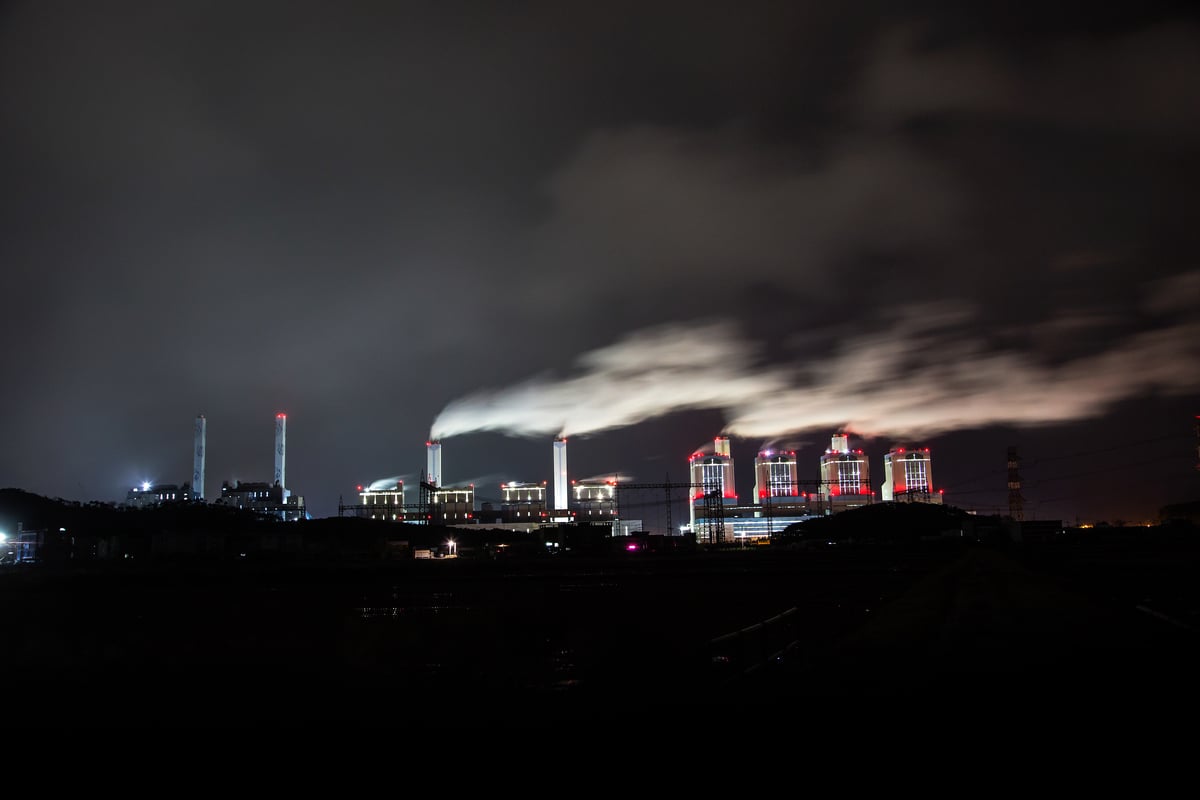From September 19 to 23, 2025, Greenpeace East Asia’s Beijing office presented the exhibition Lighting the Future: People’s Hope and Power in China’s Green Energy Future at the 25th Pingyao International Photography Festival (PIP). Curated by Na Risong, Art Director of Image Gallery, and featuring photographer Chu Weimin, the exhibition showcased aerial photographs of China’s renewable energy landscape — solar farms, wind turbines, and hybrid energy projects — alongside stories of people and communities living amid the country’s massive energy transformation. The exhibition drew widespread attention, receiving both the PIP Outstanding Photographer Award and the Outstanding Curator Award.
A new kind of landscape
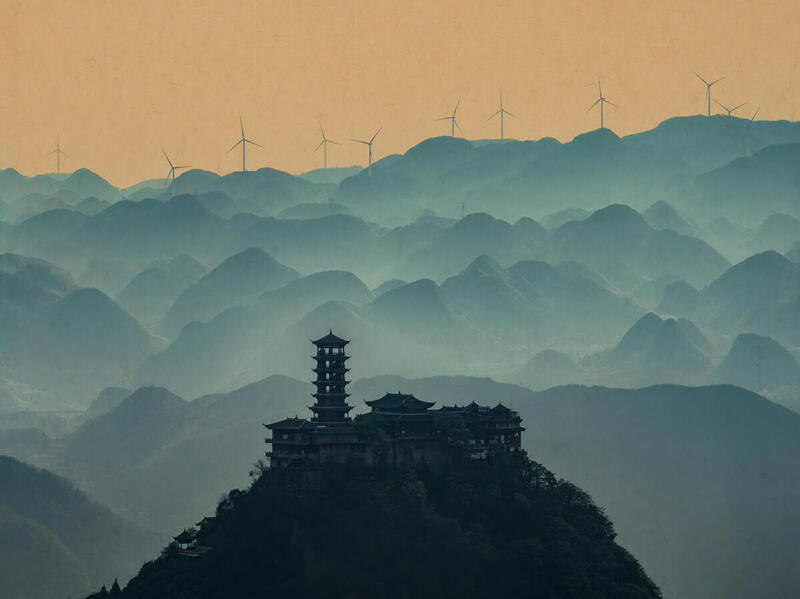
Stepping into the exhibition hall, visitors were first greeted by a breathtaking photograph: a temple perched high in the mountains, framed by the rhythmic silhouettes of wind turbines — an image that seems to merge past and future, nature and technology.
Photographer Chu Weimin has spent the past three years documenting China’s clean energy transition using drones. His most striking images resemble Chinese traditional Shanshui ink paintings — mountains and clouds now joined by rows of turbines. In these surreal, poetic landscapes, wind farms rise from mountains like brushstrokes and an ancient temple stands quietly against a backdrop of renewable infrastructure.
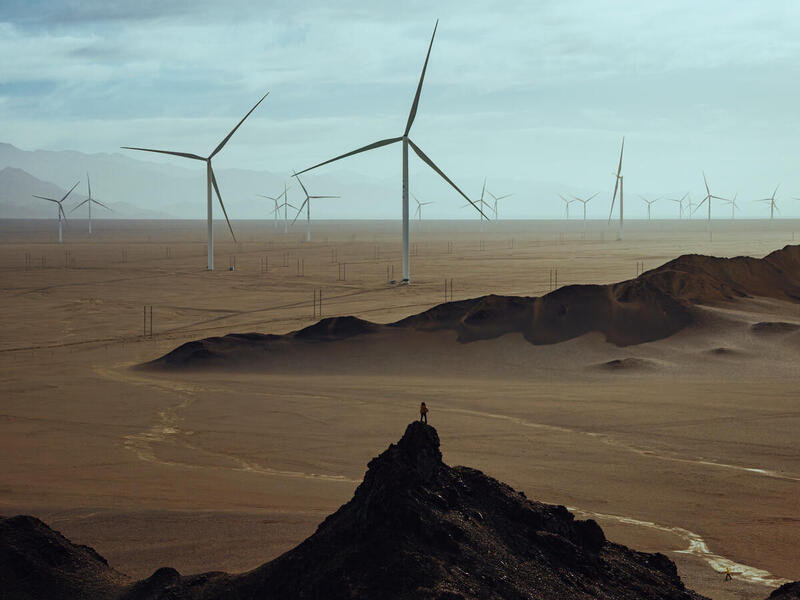
“I started out just shooting landscapes,” Chu recalls. “But when I traveled to places like Guizhou, Yunnan, and Qinghai in 2022, I kept seeing wind farms and solar power plants appear in my camera frame. I realized this is the story of our time — and almost no one is documenting it in a systematic way.”
Seeing from above

For Chu, drone photography was essential. “From the ground, it’s hard to grasp the scale of these power plants,” he explains. “But when you rise into the air, you can see the geometry, the rhythm — and their relationship with the mountains, the desert, the sea.”
His project deliberately spans diverse terrains, ranging from the deserts of Qinghai to the coasts of Zhejiang and the rural villages of Shandong. In Gansu’s abandoned copper mine, wind turbines now rise next to a hillside temple built decades ago by miners praying for safety. In Ningbo’s tidal flats, rows of solar panels coexist with fishing boats. In rural Shandong, villagers install rooftop solar to power their homes — and even their electric scooters.
Stories beneath the surface
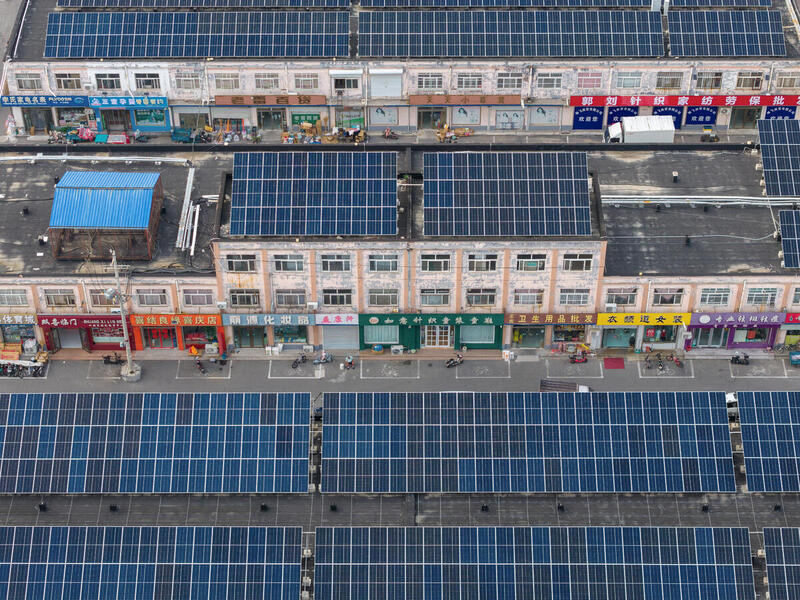
Beyond the monumental landscapes, China’s energy transition is also reshaping livelihoods and local economies. According to recent research, the clean energy sector has become one of the most dynamic engines of national growth, contributing nearly 40% of GDP growth in 2023.
Chu’s photographs capture glimpses of this transformation at the human scale. In Shandong, villagers install rooftop solar panels that not only power their homes but also generate extra income. “Many of the farmers told me their electricity bills have dropped to almost nothing,” Chu recalls. “Some even use solar power to charge their scooters or run small workshops.”
These scenes — quiet yet profound — reflect how renewable energy is no longer just a national project of heavy industry, but something deeply connected to people’s everyday lives.

In places like Qinghai’s Tala Desert, Chu also observed how solar projects can reshape ecosystems. Panels reduce heat and wind, allowing grasses to regrow beneath them. In partnership with herders, sheep graze under the panels, turning the site into a working landscape.
Energy transition at human scale
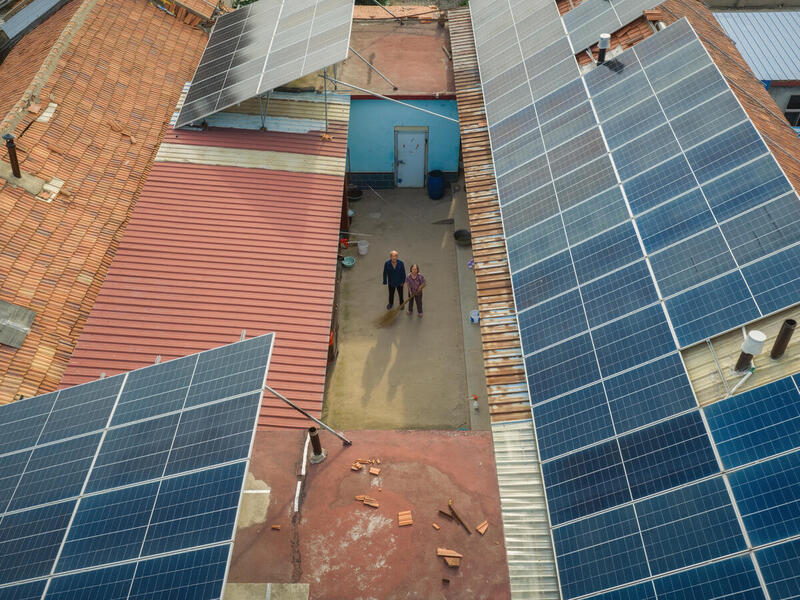
While his photographs center on landscapes, Chu’s travels also brought him into contact with people living within this transformation. Some villagers welcome solar projects as new sources of income — working as security staff, leasing land, or installing panels for household use. Others express concerns about noise or misconceptions about radiation. “People’s reactions are complex,” Chu notes. “This is real change happening on the ground, and not everyone experiences it the same way.”
Shanshui for a new era
What makes Chu’s work distinctive is not just what he photographs, but how he frames it. Drawing inspiration from classical Chinese Shanshui painting, he overlays a traditional visual language onto modern infrastructure. He enhances tones and textures to evoke the feeling of ink on paper, but without altering the underlying reality of the images.

“Shanshui paintings aren’t just about describing landscapes,” Chu says. “They’re about harmony between humans and nature. But today, harmony doesn’t mean returning to a pre-industrial world. It means finding new ways for human development and the environment to coexist.”
In this sense, Chu’s “new Shanshui” embodies the very spirit of the exhibition title. In his images, mountains, turbines, and sunlight flow together like brushstrokes in motion — revealing a nation’s search for balance between people and planet, tradition and innovation.
A future seen today
Greenpeace has a long history of collaborating with photographers to document China’s energy story — from coal pollution to community solutions. This year’s exhibition marks a new chapter: a nation in the midst of the world’s largest clean energy transition.
“We want to show the world that China’s energy future is not just about heavy industry or government megaprojects,” says Zhang Kai, Deputy Program Director of Greenpeace East Asia. “It’s also about landscapes, communities, and people’s everyday lives.”
Chu plans to continue documenting the evolution of China’s energy transition — exploring new storage technologies, emerging landscapes, and the changing relationship between people and energy.
His lens doesn’t just capture infrastructure. It offers a glimpse of what a low-carbon future might look like — not decades from now, but already unfolding across China’s deserts, coasts, and villages today.
ENDS
For media enquiries please contact:
Qilin Liu, Greenpeace East Asia, Beijing, ([email protected])
Greenpeace International Press Desk, [email protected], +31 20 718 2470 (24 hours)

